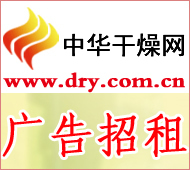Domestic biopharmaceutical industry cluster is forming
In recent years, domestic biopharmaceutical industry clusters are taking shape. However, in many areas, there are many parks scattered, less venture capital financing, and low standardization, which is not conducive to industrial development. First, there are many biopharmaceutical industrial parks and the enterprises are small and scattered. According to incomplete statistics, there are more than 4,000 large and small pharmaceutical companies in China, and no one company can enter the Fortune 500. There are more than 20 bio-industrial parks under the banner of national level in China, and there are more than 100 bio-industries in national-level hi-tech development zones, economic and technological development zones, and torch plan bases. Bio-pharmaceutical related to provincial-level development zones. More than 300 are expected. Professor Yu Xuefeng, Pasteur’s Director of Global Vaccine Development and currently chairman of Tianjin Consino Biotech Co., Ltd., said that the industrial park is blooming everywhere, but he feels that he has to do more policies, do fewer things, engage in scientific research, and do industry. Less. Many of the parks in the country are inspected, and some managers even directly propose that they can engage in more real estate development. This kind of thinking makes people feel helpless. Second, the lack of venture capital creates financing difficulties and affects R&D innovation. Yu Dechao, president of Cinda Biopharmaceutical Co., Ltd., a postdoctoral researcher at the University of California, and of 54 patents, said that there are high investment, high risks, and high returns in the biomedical field, and venture capital investment is the main focus in foreign countries. After returning to China, companies are not profitable, and neither can obtain bank loans nor go public. It takes at least 10 years for a new drug to go from R&D to sales. Domestic venture capitalists favor profitable and profitable circulation, which directly results in Financing Difficulties. Taking Cinda as an example, it possesses the advantage of monoclonal antibody drugs but cannot obtain domestic investment. Now it is jointly funded by two funds of the world's largest investment management company, Fidelity Investment Group, and it has become a foreign company established by the Chinese to return home. There are also many small businesses that are aiming at survival in the field of biological reagents or instruments with low barriers and quick results, and give up the development of new drugs. Third, the degree of standardization is low and “going out†is blocked. Wang Zhengye, senior vice president of Bray Biomedical Technology (Suzhou) Co., Ltd., which has a number of patents at home and abroad and had made important breakthroughs in the development of innovative hepatitis B drugs, said that in order to maintain R&D, some companies must provide support to foreign countries and go out to work out. . However, due to the lack of trust in the Chinese pharmaceutical industry in the international market and the long-term production of chemical drugs by some enterprises in China, they have not fully adapted to the more stringent production processes and management methods of biopharmaceuticals and have failed to achieve the CGMP (Dynamic Drug Product Management Regulation) that is recognized by some countries. )standard. For example, Borui can only export to India in the form of raw materials or semi-finished products. Most of the profits are earned by Indian OEM. Slewing Mechanism and Spare Parts
A slewing mechanism is an essential component of a Tower Crane that allows it to rotate horizontally. It enables the crane to reach different areas of a construction site without having to move the entire structure.
Slewing Motor, Tower Crane Spare Part,Slewing Mechanism,Slewing Reducer,Slewing Bearing,Tower Crane Slewing Motor SHEN YANG BAOQUAN BUSINESS CO., LTD , https://www.syconstructionhoist.com
The slewing mechanism typically consists of the following components:
1. Slewing Ring: The slewing ring is a large circular bearing that supports the entire weight of the crane and allows it to rotate. It is usually located at the base of the crane and is designed to withstand heavy loads and provide smooth rotation.
2. Slewing Motor: The slewing motor is responsible for providing the necessary power to rotate the crane. It is connected to the slewing ring and is controlled by the crane operator.
3. Gear Mechanism: The gear mechanism consists of a set of gears that transmit the power from the slewing motor to the slewing ring. It ensures smooth and controlled rotation of the crane.
4. Brake System: The brake system is an important safety feature of the slewing mechanism. It is designed to hold the crane in place and prevent any unintended rotation when the crane is not in operation.
5. Control System: The control system allows the crane operator to control the rotation of the crane. It typically includes joysticks or buttons that enable the operator to start, stop, and control the speed and direction of rotation.
Overall, the slewing mechanism plays a crucial role in the functionality and versatility of a tower crane. It allows the crane to move horizontally, reach different areas of a construction site, and perform various lifting tasks efficiently.